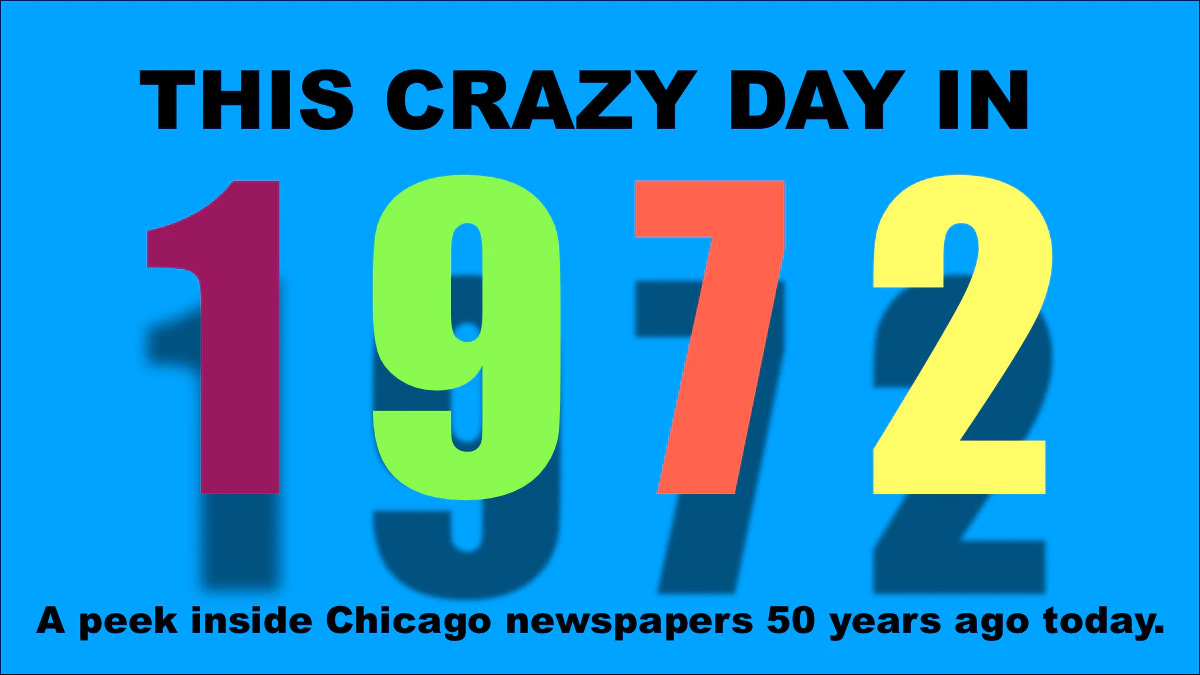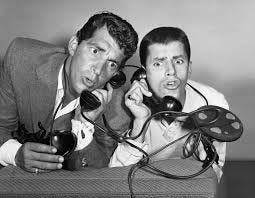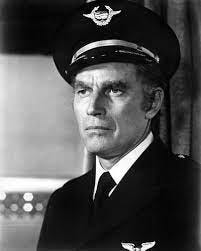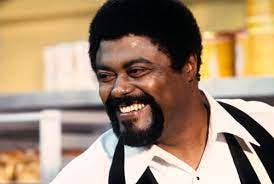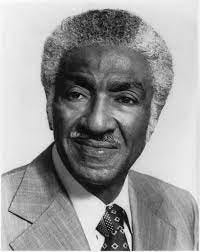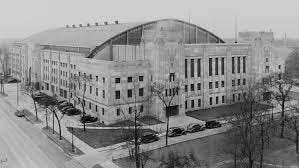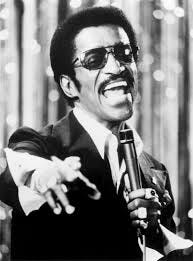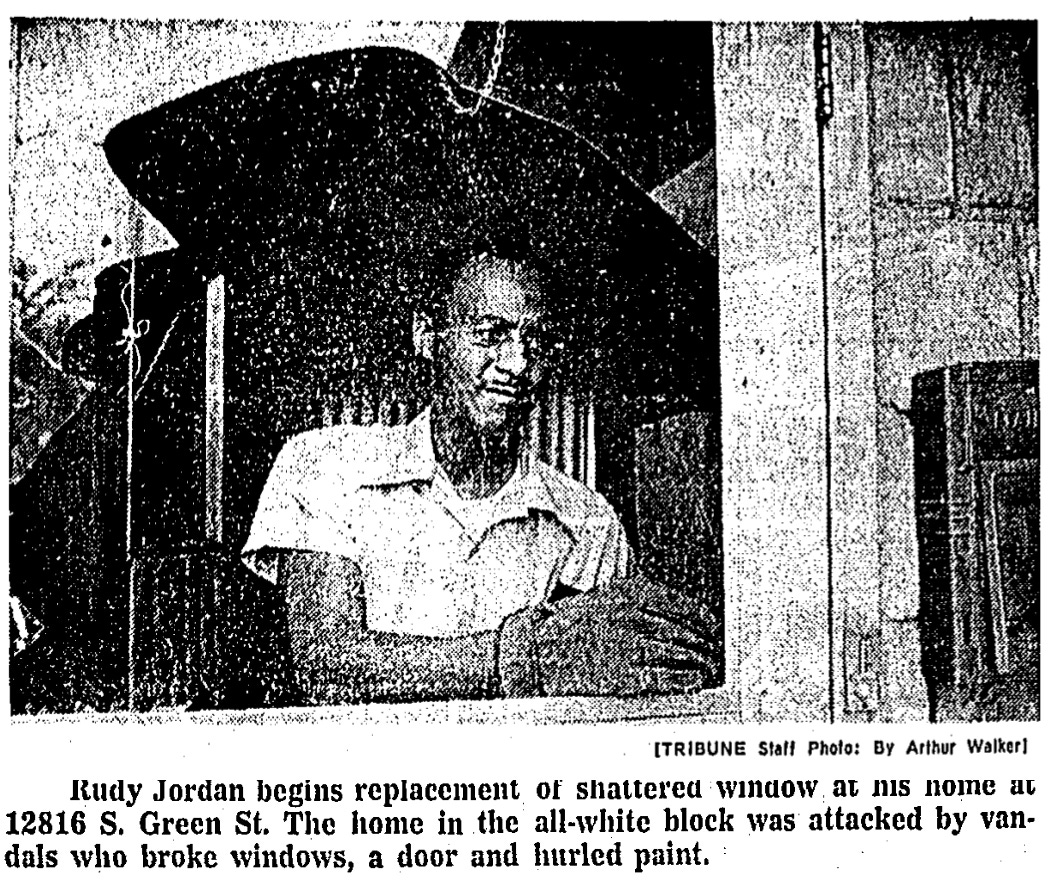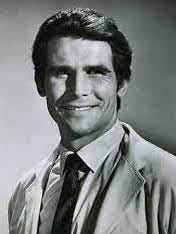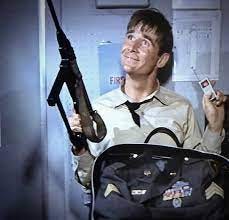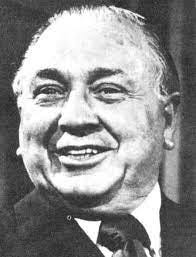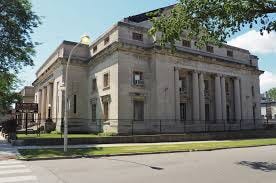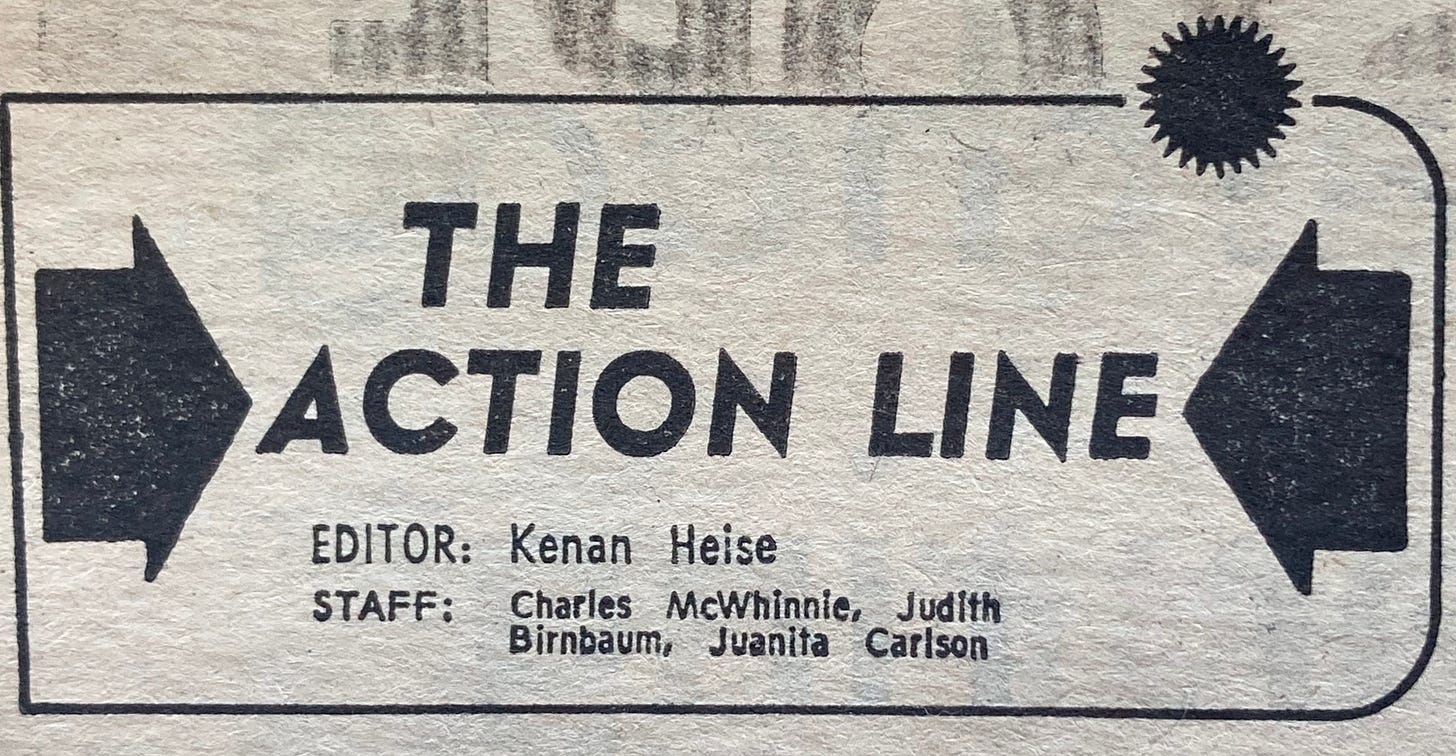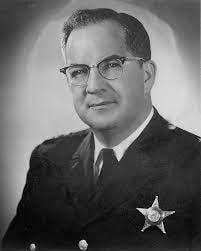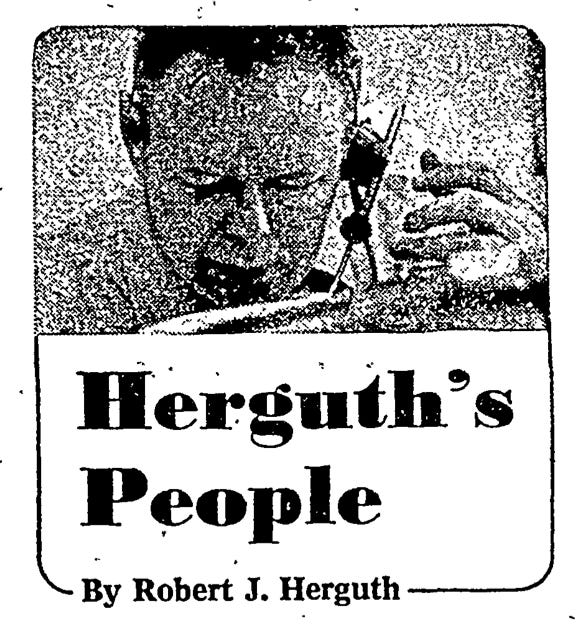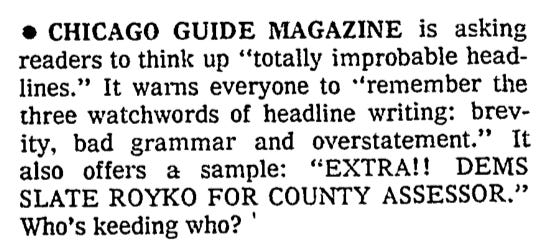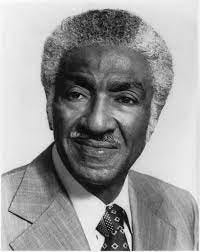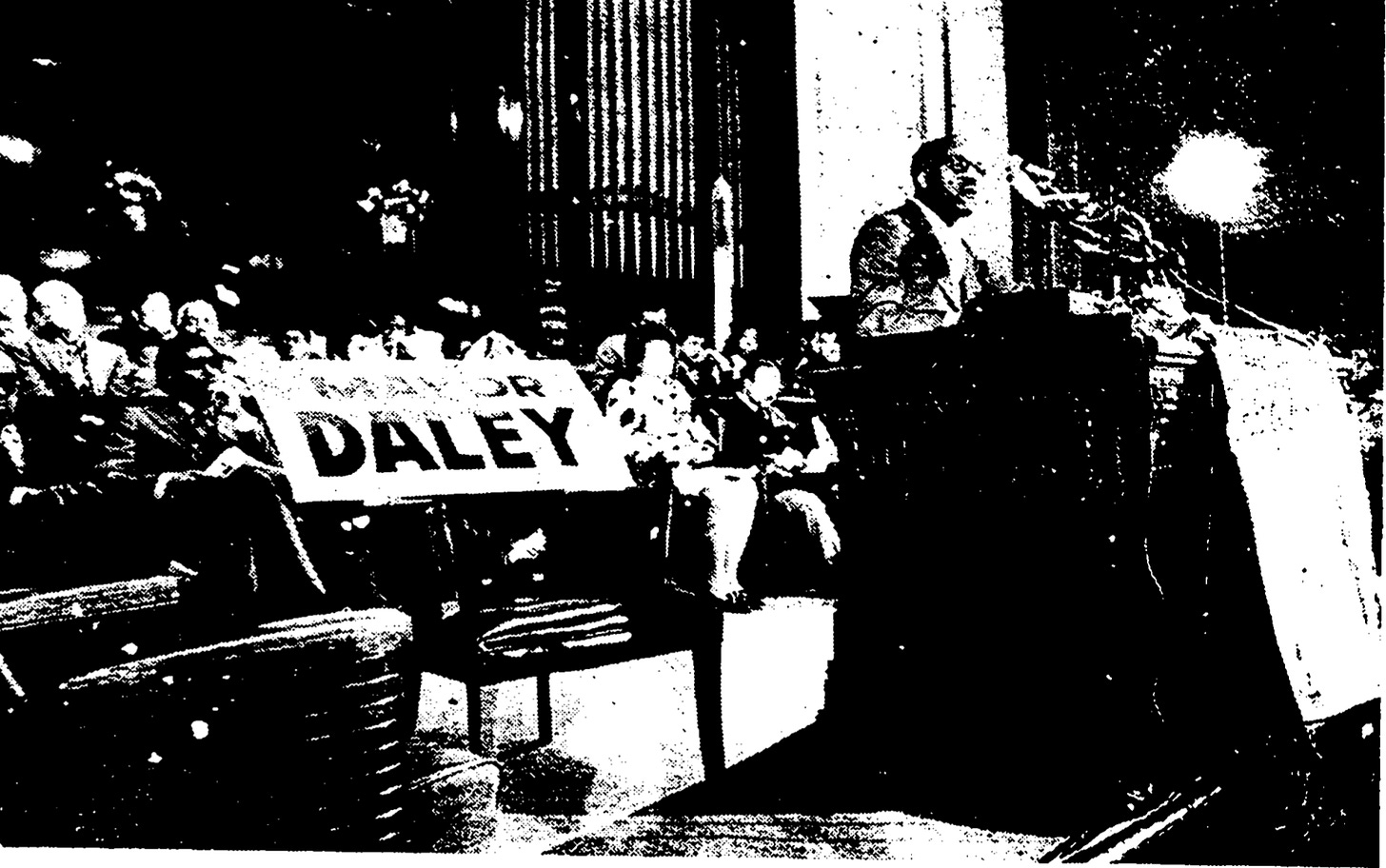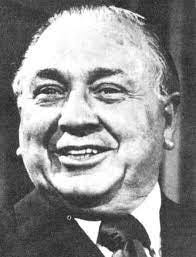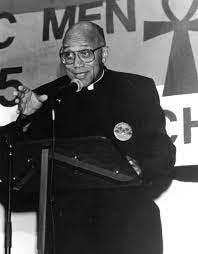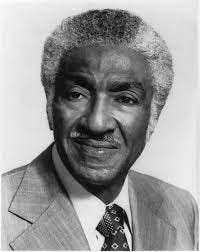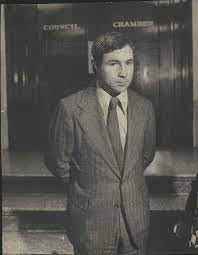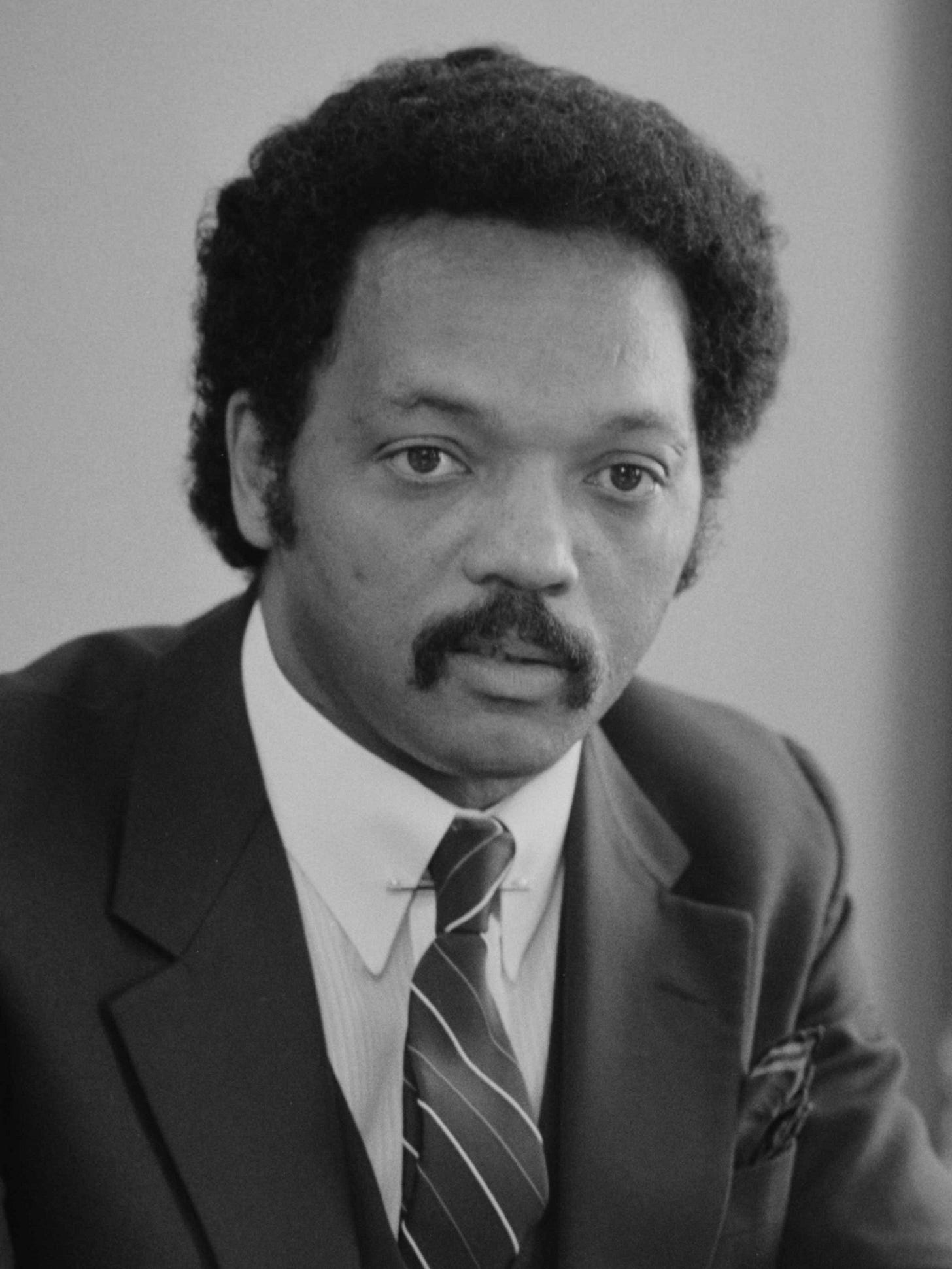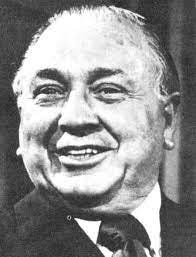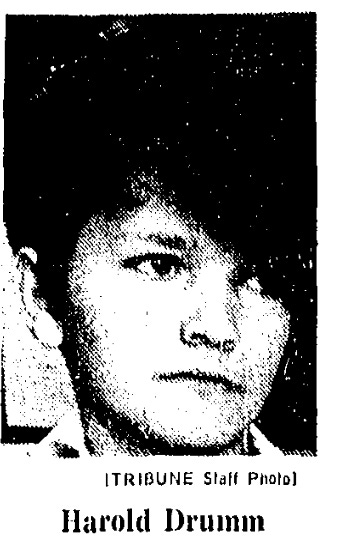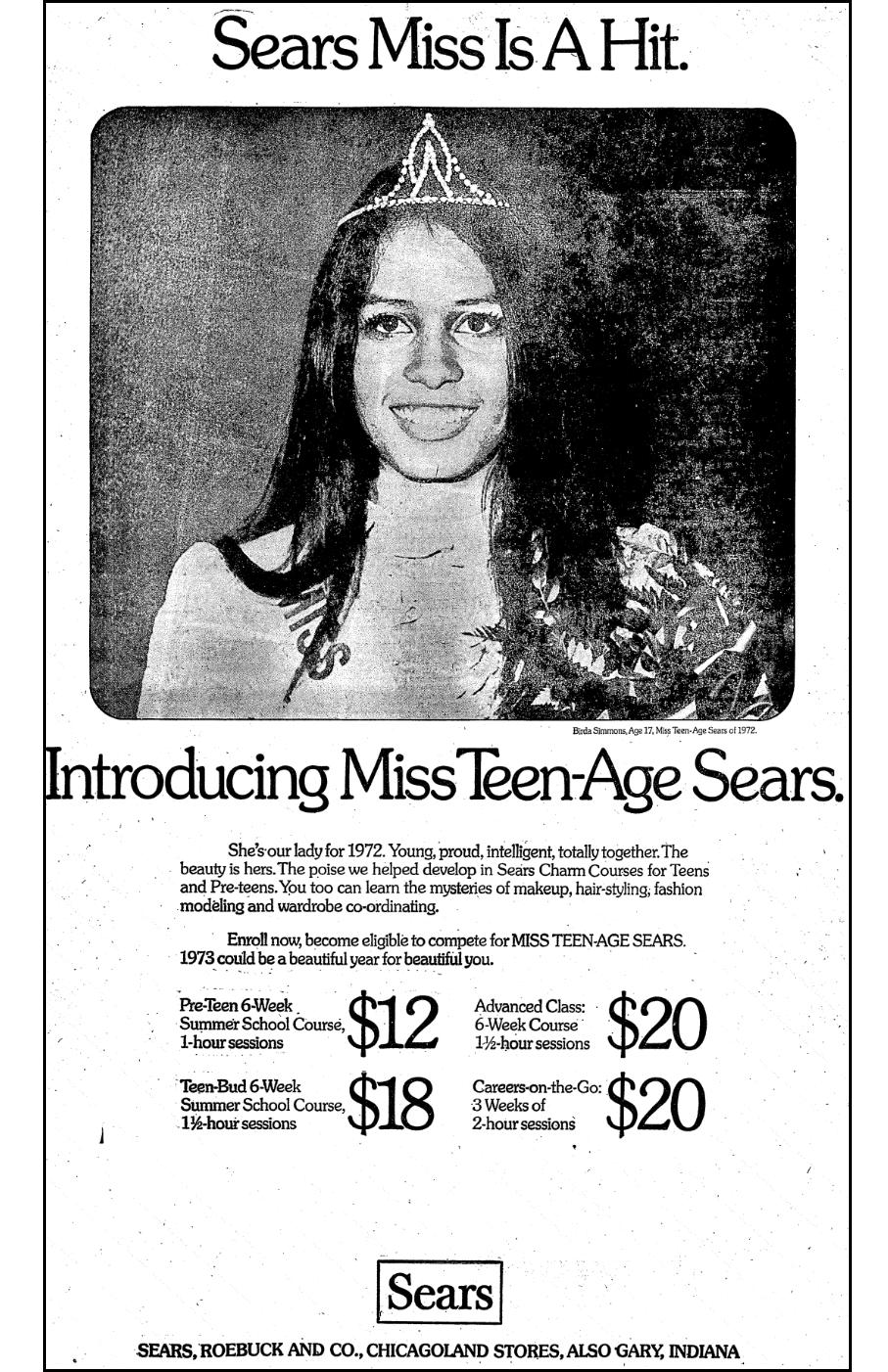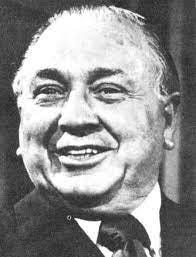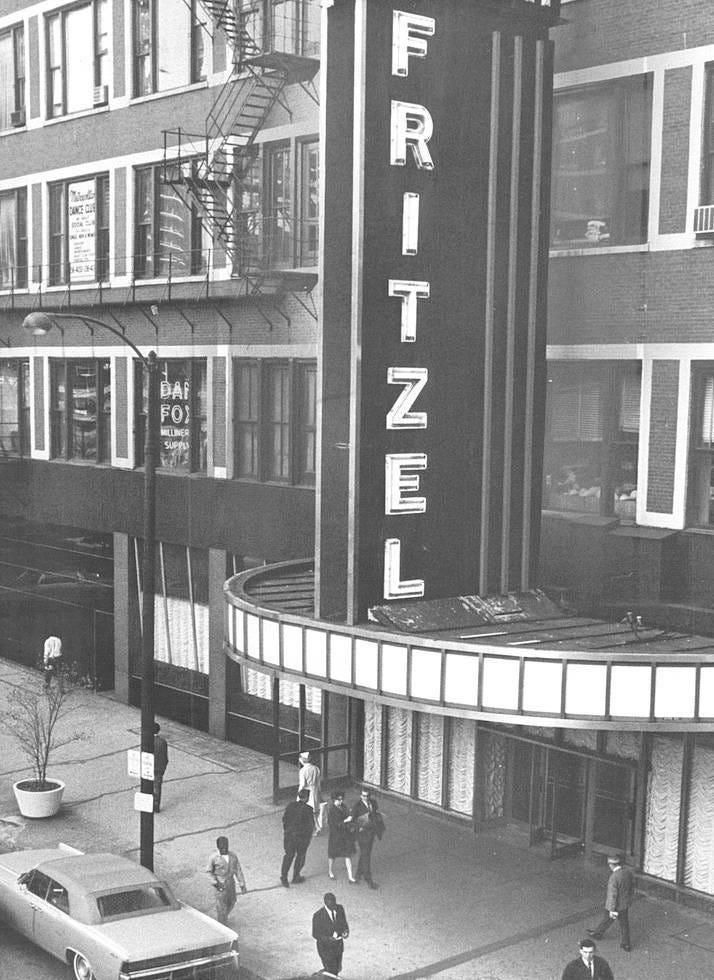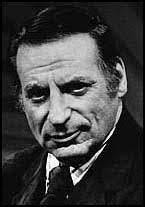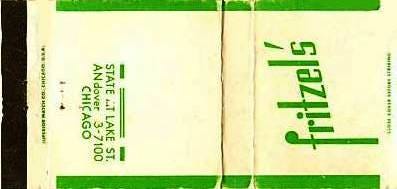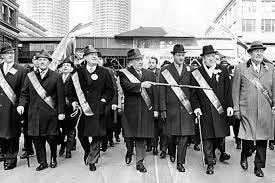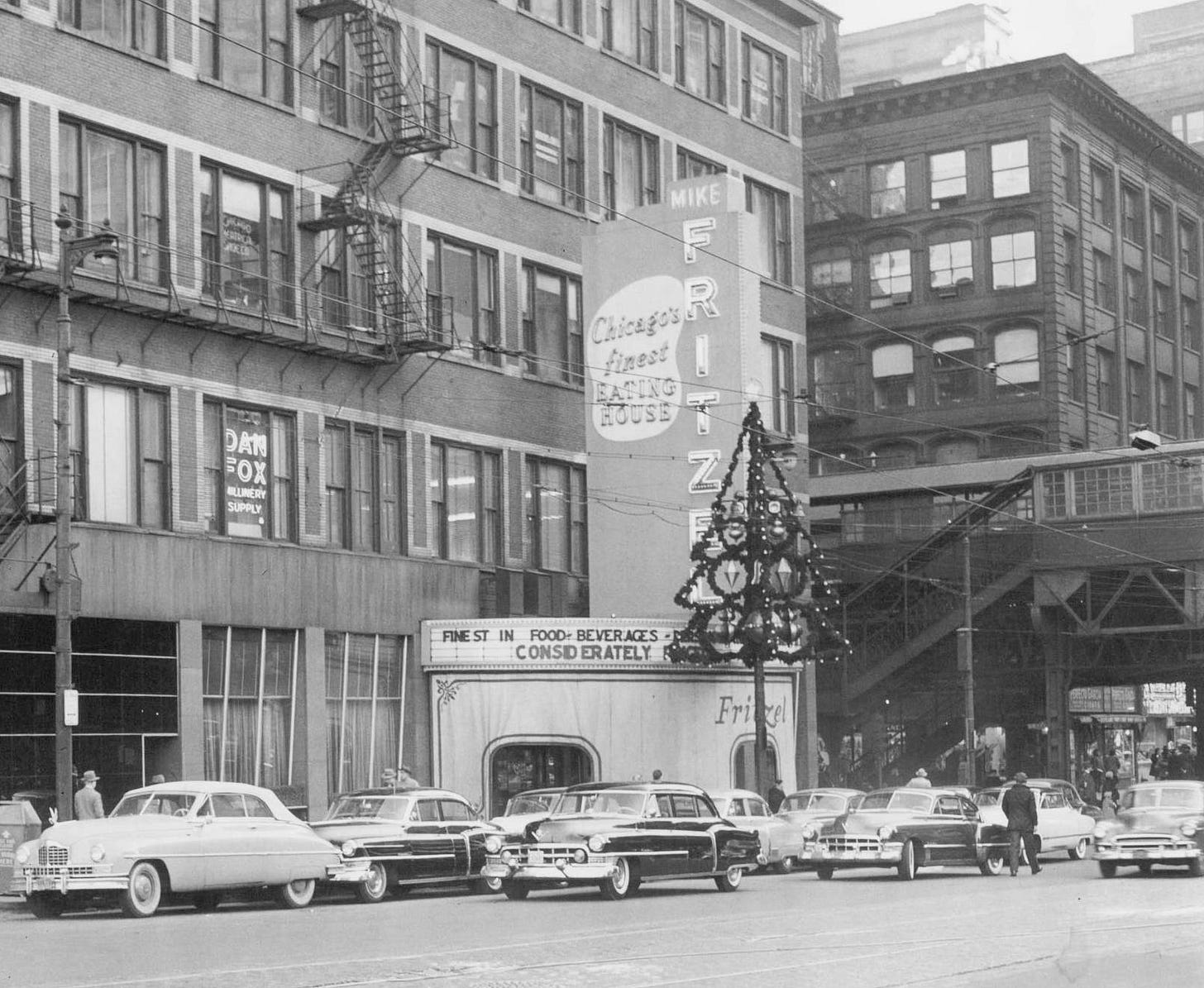THIS CRAZY DAY IN 1972: Girls just wanna be cops
Weekly Compilation May 29-June 4, 1972
To access all contents, click HERE.
Why do we run this separate item peeking into newspapers from 1972? Because 1972 is part of the ancient times when everybody read a paper. Everybody, everybody, everybody. Even kids. So Steve Bertolucci, the 10-year-old hero of the novel serialized at this Substack, read the paper too—sometimes just to have something to do. These are some of the stories he read. Follow THIS CRAZY DAY on Twitter, @RoselandChi1972.
May 29, 1972
Chicago Tribune: Goldblatt’s full page ad
What is Memorial Day without Memorial Day sale ads? And Goldblatt’s was a classic Chicago staple of all things sale.
It’s interesting that Goldblatt’s runs full page ads in the Tribune. The Trib gets near all the ad dollars from the classy joints like Bonwit Teller and Saks. A smaller share goes to the Daily News—never to Chicago Today, never the Defender, and I don’t think to the Sun-Times either.
But Goldblatt’s advertises across the spectrum. You can find Goldblatt’s ads anywhere. Clearly Goldblatt’s knows everybody likes a deal, even Tribune readers.
May 29, 1972
Chicago Tribune: Gene Siskel “The Movies” review
Reminder—in 1972, Gene Siskel is three years away from his real road to stardom with Sun-Times critic Roger Ebert via their nationally syndicated TV show reviewing current films, known by many names including “Sneak Previews” and “At the Movies.”
Siskel and Ebert’s immortal schtick: They each gave their own final edict on films with a thumbs up or thumbs down. When a movie got “two thumbs up,” there was no higher honor.
Siskel & Ebert were so big, they were regulars on Johnny Carson’s “Tonight Show” and later the other late-night talk shows like David Letterman. They had a weird vibe that grew and deepened over the years, not always in a good way—kind of like smart Laurel & Hardy if Laurel (Siskel) hated and envied Hardy (Ebert). I recall the last time or two I caught them on a talk show, it was as uncomfortable as an episode of the original British “The Office.”
“Good morning, ladies and gentlemen, this is your critic speaking,” Siskel starts today. “‘Skyjacked,’ at the State Lake Theater, is one of the silliest motion pictures of the year.”
Siskel notes one of the movie’s most tense moment is when the head stewardess played by Yvette Mimeux asks pilot Charlton Heston to have coffee with her in the cafeteria before the flight, and he declines.
“The passenger list is the typical airplane drama composite of the United States: A pregnant woman just into her ninth month. A United States senator on a fishing trip with his son. A hippie girl with an establishment first-class ticket…A big, happy-go-lucky, black man. A nervous Army sergeant [pssst….he’s got the bomb].
“Basically it’s the same group of hysterical passengers who flew with John Wayne in ‘Airport,’” Siskel concludes. “Only a black stewardess [Leslie Uggams] has been added to identify the airline as an equal opportunity employer.”
Nothing else really matters, writes Siskel. “Any suspense the film might have maintained is killed by the casting. With Dean Martin at the controls in ‘Airport,’ the plane might have crashed.”
Touché Gene Siskel, so true—here’s Dean Martin, left, in his initial 1940s showbiz incarnation as half of the “Martin & Lewis” comedy team with Jerry Lewis. You’re not getting on a plane with him. After Martin & Lewis split, Dean morphed into an actor and singer nicknamed “The King of Cool,” a persona built around his schtick as a consummate and constant drunk. But not the kind of drunk that would save a jet like Denzel Washington in “Flight.” The kind of drunk who says he uses his cuff links “as curb feelers.”
“But with Charlton Heston in the cockpit in ‘Skyjacked,’ the skyjacker doesn’t have a chance,” Siskel points out. “Heston can always change a seat belt into a serpent.”
Which reminds me that Siskel did a great review of “The Ten Commandments” on April 9, a towering mid-20th century classic from 1956 which is still in the midst of a theatrical revival in our 1972 timeline.
After watching the “Skyjacked” trailer, I can add: Charlton Heston pilots the plane while smoking a pipe.
The trailer announcer sounds like he should be doing NFL highlights.
1970s stalwart Marietta Hartley is the pregnant lady, and the hippie chick is the dream of so many 1972 pre-teen boys—Susan Dey of “The Partridge Family,” whose biggest competition is of course Marcia Brady.
Steve was partial to Marcia and doesn’t care who knows it.
Football star Roosevelt “Rosey” Grier is the “happy-go-lucky black man,” but he doesn’t get much screen time in the trailer.
May 30, 1972
Chicago Daily Defender: Charlie Cherokee Says column
“Those who know Rep. Ralph Metcalfe best say that it was the police mistreatment of Dr. Herbert Odom, a strong supporter and friend of the Congressman, that broke the camel’s back and impelled Metcalfe to protest publicly police behavior. He took the first step and the rest is history. Dr. Odom, Dr. James Buckner and others are going to show how much they appreciate his efforts by honoring him at a ‘Soul Jamboree’ on June 17 at the General Jones Armory.”
Note: All due respect to Charlie, everybody who’s paying attention knows that Dr. Odom’s run-in with Chicago police started this pile of dominoes falling, because it’s been reported all along.
Also Note: The General Jones Armory is an imposing building at the eastern edge of Washington Park, on Cottage Grove at 52nd Street—originally the Washington Park Armory. In our timeline, it had just been renamed in 1970 for General Richard Jones, a Black general who served in both World Wars. An episode of Channel 11’s wonderful “Ask Geoffrey” covers the armory and General Jones.
“Rex Woodruff, a white student at Northwestern, has filed a federal suit against the University on the grounds that it discriminates against white students. The suit is the outgrowth of a fight with a black student, Jimmy Moore. The fight itself was an outgrowth of the policy of providing separate housing for blacks which Northwestern agreed to after pressure from black students. Woodruff’s lawyer claims that Northwestern is violating the 1968 Civil Rights Act that outlaws discrimination in rental housing. How ‘bout that, chum?”
“The black Republicans are making as much use of the name of Sammy Davis, Jr. as possible in trying to lure black voters into the Nixon camp. At the Gallery Club here in Chicago on Friday, Sammy will be the honored guest at cocktail party sponsored by ‘Blacks for the Re-Election of President Richard M. Nixon.’ The most prestigious non-political figure in the black community to come out publicly is Dr. Charles Hurst of Malcom X.”
Note: Sammy either didn’t show up to that shindig, or showed up hours late, not in time for the later coverage of the event. But it was well attended and sounds like everybody had fun.
“George L. Morrow, president of the Peoples Gas Light and Coke Company came to the support of a black employee last week who moved into a white area. Before the black employee, Rudolph Jordan, could move into his new West Pullman neighborhood home, vandals broke the windows, burned the garage, spattered paint on the drapes. and carpet and broke the car windows. President Morrow said that the company would go all out to protect Jordan and condemned the action of the vandals. The new wave of attacks on blacks who are moving into white areas has not been publicly denounced by public officials in any meaningful way.”
The picture above is from the Tribune coverage of the attacks on the Jordan’s home. See May 25, May 26, May 27 and two items on May 28 in last week’s TCD1972 for more on the Jordans.
And yes, Younger Readers, the Defender began running a column called “Charlie Cherokee Says” in the ‘40s. See the January 4 item here for more background.
May 30, 1972
Chicago Today: “Films”: Mary Knoblauch
It would have been fun to see Mary Knoblauch on “Sneak Previews” once in a while. Sounds like her thumb might have been squarely. in Gene Siskel’s eye:
“‘Skyjacked’ is one terrific summer movie. Unpretentious, exciting, topical escapism is exactly what we want from the movies when it’s hot and lazy. ‘Skyjacked’ delivers just that in an even bigger dose than ‘Airport’ offered two years ago.”
Knoblauch gives fair warning before revealing the skyjacker is TV’s beloved “Dr. Welby, M.D.” costar James Brolin—
—breaking character as a psycho. Knoblauch says they had Brolin go over-the-top psycho because Charlton Heston said he wouldn’t have anything to do with a movie that romanticized a skyjacker.
“And meanwhile the film offers some of the most spectacular aerial photography we’ve seen in ages—including four Russian MIGs [F-15s in disguise] buzzing the 707. None of it was faked, and the effort shows.”
May 30, 1972
Chicago Daily News
by Barry Felcher
“More than 4,000 young women who want to join Chicago police will take a civil service examination Saturday.
“But less than an estimated 50 of them will ever wear the blue skirt and blouse that go along with the policewoman’s job. The department has only 85 policewomen.
“Almost 95 percent of the applicants are black.”
The questioned applicants mainly want to help in the community, and believe the police force needs more Blacks and women.
Miss Jacqueline Speed, 21, said she’s applying because “there are not enough black policewomen working in the lock-up…and because some of the policemen brutalize women.”
Sue Ann Herrmann did it on a lark. “‘I just want a chance to get out of the typical roles they cast women into,’ she said with a smile.’”
The pay is great—$10,521 ($71,016.75 in 2022 money) to start, going up to a maximum of $13,680 ($92,340) after a year, the “same as that of a patrolman.”
I can’t find it now, but another paper covered this story as a picture of the long line of female applicants winding down the street, quoting a police official describing the small likelihood that any would ever get hired by the Chicago Police Department:
“They may as well run for mayor.”
May 30, 1972
Chicago Daily Defender
by Lucille Younger
U.S. Rep. Ralph Metcalfe, a lifetime Machine stalwart who is now leading the Black community’s charge to force Mayor Daley to eliminate police brutality in the Black community as head of the Concerned Citizen’s Committee for Police Reforms, held a press conference over the weekend to announce “a vacant chair would be reserved for Mayor Daley at a public rally to be held tomorrow at Mt. Pisgah Baptist Church, 4600 S. King Dr. at 7:30 p.m.”
“Today is the eve of the deadline date when Mayor Daley and Police Supt. James B. Conlisk Jr. were challenged to comply with the six demands enumerated by Metcalfe and the Concerned Citizens for Police Reform, designed to end police mistreatment against civilians.
“It does not appear that the Mayor and police superintendent will make that deadline.”
See May 24 “Metcalfe: Daley must meet our deadline” for more background on this ongoing dramatic power struggle between Metcalfe and Mayor Daley. The two men held dueling meetings to discuss police brutality in the Black community in early May, each refusing to attend the other meeting. Metcalfe has insisted that Daley must meet with Black leaders in the Black community—by May 31.
Note: The demands are listed by the Defend as “6” while the Daily News and others sometimes call it “5” demands, since #6 is a deadline rather than a policy change.
Last week, Metcalfe told Chicago Today’s Jeff Lyon that he was sure Daley would come to the Black community by May 31.
Who was Eddie Foy? And what does Eddie Foy have to do with Mike Royko, gangsters and a seedy clip joint? Find out in the February 25 item here.
May 31, 1972
Chicago Today: Go Brazil
Brazil has figured out how to deal with skyjackers.
A single Brazilian skyjacker took over a Brazilian plane flying out of Sao Paulo using a single handgun. He forced the pilot back to Sao Paulo, where he demanded $250,000 and three parachutes. He made the pilot tell the control tower that three men had taken over the plane—but using a secret prearranged code, the pilot actually told the tower the real situation.
Back in Sao Paulo, the hijacker received his ransom and let the passengers off the plane, planning to make the crew fly him elsewhere. But “the three remaining crew members shoved the hijacker into the passenger cabin and locked the door. They jumped out of the cockpit. Troops surrounded the plane and began piping tear gas into it thru the air conditioning system. The man was found dead, shot with the pistol he carried” through the head.” (I’m guessing pilots know how to get out through the windshield in a pinch.)
May 31, 1972
Chicago Today
Chicago Today’s public service column, Action Line, includes a concluding “Sound Off” item in which readers voice their opinions. Today:
May 31, 1972
Chicago Daily Defender: editorial
“In the past three weeks public attention has been drawn to the disturbing plight of three black families whose new homes in white neighborhoods have been vandalized to the point that has strained human patience and tolerance.”
“The black families have acted with great forbearance under the most brutal provocation. They are to be commended for their coolness and fortitude in a situation where they would have been justified if they had reacted on the scriptural premise of a tooth for a tooth.
“How long they can maintain this serenity in the face of racial violence is not predictable. But the reaction elsewhere, in adjacent quarters could well ignite the flames of racial hate to an ugly expression. The police can do much to avert such a confrontation.”
May 31, 1972
by Barry Felcher
“Fifteen Chicago police officials with the rank of lieutenant or higher were shifted to new posts Wednesday in a police shakeup that involved 11 police districts.
“Police Supt. James B. Conlisk Jr. demoted four officials, promoted five and made six transfers with no change in rank. He said the changes were ‘made to strengthen the department.’
“Four black police officials were involved in the transfers, which were made on the day the Concerned Citizens for Police Reform had set for Conlisk to fulfill five demands made by the group. Rep. Ralph H. Metcalfe (D-Ill) is head of the Concerned Citizens.”
“Sources” tell the Daily News that the ongoing federal grand jury investigation of police bribes and shakedowns is driver behind this the shake-up, since the moves and demotions mainly (but not exclusively) involve officials in charge of districts where cops have been indicted for shaking down bowling alleys and bars. Eight current cops from the Austin district are already indicted, and a county grand jury has begun its own investigation.
“The shakeup came as the police department is facing its biggest crisis since 1960.”
May 31, 1972
Chicago Daily News
If you’re a regular THIS CRAZY DAY reader, you’ll probably want to follow Mike Royko 50 Years Ago Today too.
June 1, 1972
Chicago Daily Defender
no byline
“‘Mayor Daley is not God,’ declared Rep. Ralph Metcalfe last night in the most dramatic speech of his political career,” writes Lucille Younger.
“Metcalfe delivered the ringing words in Mt. Pisgah Baptist Church, 4600 S. King dr., where more than 3,000 gave the grey-haired legislator a standing ovation as he uttered the words.”
Metcalfe shared the stage with a host of Black community leaders and celebrities sitting behind him—along with a large chair, right beside the speaker’s podium, holding a big sign reading “Mayor Daley.”
“‘Meeting with Daley is no big thing, though,’ Metcalfe said, as the eager audience cheered him on.” Further back in the paper, the Defender reprints the full text of Metcalfe’s speech.
Metcalfe also said the Daley administration was pressuring leaders in the Concerned Citizens for Police Reform—including withdrawing Metcalfe’s two bodyguards, and bodyguards assigned to Rev. Jesse Jackson and Daddy-O Daylie, who has prominently opposed street gangs and crime for years. (Note: Other reports specify that only some of Metcalfe’s and Jackson’s bodyguards were reassigned. Metcalfe had 16 bodyguards previously. It’s not clear whether Daddy-O Daylie was left entirely unprotected.)
Metcalfe announced that the Concerned Citizens would begin setting up their own police review boards in each district, which received another standing ovation.
Later, NAACP Executive Secretary Andrew Barrett read a list of other politicians who were officially invited to the meeting, and didn’t show. “Some of the officials sent telegrams or letters explaining their absence.” But some didn’t respond, including Illinois Senate President Pro Tem Sen. Cecil Partee and Ald. Claude Holman (4th), both Daley stalwarts.
“The audience soundly booed the names.”
“Metcalfe said he expects more of ‘Daley’s Negro lackeys’” to oppose the Concerned Citizen’s demands. “He was obviously referring to Sen. Partee, who, earlier in the week told newsmen he feared the citizen reform group’s efforts would result in the watering down of police protection in the black community.”
The many leaders and politicians at the meeting included James Compton from the Chicago Urban League, Ald. Leon Despres (5th), and Father George Clements, pastor of Holy Angels Roman Catholic Church.
June 1, 1972
by Edmund J. Rooney and Phillip J. O’Connor
“The Chicago Human Relations Commission Thursday began reviewing police brutality cases and its chairman vowed that there would be ‘no whitewash’ of errant policemen.
“Peter Fitzpatrick, the chairman and an attorney, said ‘We will do our damndest to make impartial investigations. We don’t serve anybody if we act weakly.’”
“The Commission began its new job of reviewing cases investigated by the police Internal Affairs Division (IAD) after a police shakeup that was partly influenced by complaints from blacks of alleged police brutality.
“The review by the Human Relations Commission is the closest thing Chicago has had to a civilian review board. The 14 commissioners are civilians and civilian employees of the commission will make any investigations that are a part of the review.”
But, the News notes, “the commission is a city agency and its employees are on the city payroll.” The IAD turned over six case files, and an IAD official said they receive and will be turning over an average of five cases daily of alleged police misconduct and assault of police officers.
No mention that the commission’s new duties are related to Rep. Metcalfe’s push for police reform.
June 1, 1972
The changing front page of the June 1 Daily News for its updated editions both illustrates and, in this edition, explains the fast-moving police story:
June 1, 1972
Chicago Daily News
By Lu Palmer
“After a scathing attack on Mayor Richard J. Daley, Rep. Ralph H. Metcalfe (D-Ill.) announced that blacks and Latin-Americans in Chicago will organize their own citizen police review boards.
“‘The mayor of this city is not the almighty god I was taught to pray to,’ Metcalfe told some 4,000 blacks jammed into Mount Pisgah Baptist Church, 4600 S. King, Wednesday night.
“‘The mayor can’t seem to tolerate us unless we are down on our knees,’ the former Daley administration alderman said. ‘The mayor of this city has made it clear that he cannot tolerate black manhood.’”
Since Mayor Daley didn’t show up for the Concerned Citizens for Police Reform meeting, CCPR sent Daley a telegram concluding:
“It is clear that you do not expect to count on our support.”
June 1, 1972
Chicago Daily News: Front page picture, three columns wide, right under the top headline
Not to pick on the Daily News—all papers are using the beach as excuses to run pictures of young women in skimpy bathing suits.
June 2, 1972
Chicago Today
by Joel Weisman and Michael Hirsley
Remember back on April 1-2 when Ald. Bill Singer (43rd) and some other independent Democrats asked the Democratic National Committee to send a hearing officer to judge whether Mayor Daley’s 59 Illinois delegates to the national convention had been elected correctly according to newly reformed Democratic party rules?
Singer led the challengers, who hope to keep Daley’s delegate bloc from being seated at the national convention in Miami in July. Now those Democratic Party hearings are on, and Rev. Jesse Jackson is being called a leader of the independents too.
Recall that Sen. George McGovern’s “McGovern Commission” set up new rules for picking delegates to the Democratic National Convention, which the challengers say Daley violated.
The reforms include “no party slating to discourage independents; and no use of party funds to support any candidates.” The rules also require a representative proportion of women, Blacks, young people, and other minorities among the delegates.
Former U.S. prosecutor Cecil Poole—who is gratuitously identified as being Black in a way that would seem very strange to 2022 eyes—presides as the hearing officer.
Witnesses who testified against Mayor Daley’s delegates include Ald. Seymour Simon (40th), Rev. Jesse Jackson, and Ald. William Singer (43d), and Lynn Williams, New Trier Township committeeman.
In yesterday’s coverage, Weisman wrote that Poole “quickly made it clear he wasn’t buying the Daley delegates’ dilatory tactics, overruling a host of objections. He also made it clear he would not favor the challengers, thus allowing Rev. Jesse Jackson to undergo an often embarrassing cross-examination from a battery of Daley delegate lawyers, including the Mayor’s son, Michael.”
Jackson was “obviously poorly prepared,” Weisman wrote yesterday. Among points that came up, listed here and in a Daily News story on June 3-4:
Jackson didn’t know all his fellow challengers or even one of his own lawyers;
Jackson admitted he’s endorsed Republicans for office in the past;
Jackson admitted he didn’t even vote in the primary when the delegates being challenged were elected;
Jackson didn’t read the party reform rules until last week.
During the lead up to that primary, Lynn Williams, the New Trier Township “committeewoman,” “said Mayor Daley told one Cook County party meeting, ‘We’ll elect our delegates as we always have. Why the hell should we let these people in Washington tell us how we should elect them?’”
Ald. Simon testified that Mayor Daley told a Feb. 24 party meeting “he sure didn’t give a damn about the rules of the McGovern Commission, and that once the delegates were seated, no one would throw them out.”
“Simon quoted Daley as saying, ‘I’d like to see someone throw them out.’”
This is why Ald. Simon has to write to the Daily News’ Bee Line public service column to get potholes filled in his ward’s alleys—see Jan. 19 for that story. Back on Dec. 29, Ald. Simon was trying to get tree stumps in his ward removed a City Council meeting.
As mentioned in December, Ald. Simon will ultimately end up on the Illinois Supreme Court. But right now he’s stuck in the purgatory of a second stint on the City Council. He did an earlier stint while he was a Machine loyalist, then moved up to the Cook County Board, and then to president of the Cook County Board, all thanks to Mayor Daley.
But Mayor Daley made sure President Simon wasn’t slated by the Democrats to run for re-election because Simon ran afoul of Ald. Tom Keane, finance committee chairman and possibly the second most powerful politician in Chicago after Mayor Daley.
Per the Tribune’s obituary of Seymour Simon, he had refused “to order the rezoning of 186 acres in Northfield Township for use as a garbage dump at [Keane’s] request.”
So now Ald. Simon is back in City Council, and somehow he is still also 40th ward commiteeman, which means he attends meetings and hears thing. At this hearing, Simon testified that at the Feb. 24 party meeting, Mayor Daley offered Democratic ward committeemen free sample ballots to give voters. The ballots identifyied and supported the Machine’s chosen delegate candidates for the primary election.
“Simon testified that Daley told committeemen…the sample ballots would be available to them, and if they couldn’t afford the printing cost, the Democratic organization would pay it.”
Simon took some ballots, didn’t hand them out, and provided them at the hearing as evidence.
June 2, 1972
Chicago Today: A cop who cites crime statistics
“One of the strangest quotes I’ve come across came from First Deputy Police Supt. James Rochford in the Deering district community meeting Wednesday night.
“‘Here is something you will not read about in the daily press. Last weekend, there were 76 shootings and 26 rapes. The enemy is not your police, but crime and criminals.’
“I don’t get the point. Every once in a while the papers DO print one weekend’s crime toll, and the howls of anguish from police officials and City Hall are staggering. ‘You’re trying to kill our city,’ is the mildest. ‘Why don’t you report the good things?’”
“If Rochford really wants this printed every Monday, I’m sure we can oblige. If I were in his position I wouldn’t be broadcasting figures like that. No sane person calls the police the enemy. But it certainly is one of Rochford’s functions to make chicago a city. where there are not 76 shootings, 16 of them fatal, 16 stabbings, and 26 rapes on a normal weekend.”
June 2, 1972
Chicago Today: Boy bears misery, fight for arm lost
by Jeff Lyon
Chicago Sun-Times: Boy loses valiant fight to save arm
no byline
Chicago Tribune: Boy Loses Long Fight to Save Arm
by Ronald Kotulak
“After a valiant, seven-week struggle, 13-year-old Harold Drumm lost the battle to save his right arm, which was severed in an accident and then rejoined to his body,” writes the Sun-Times.
“When his doctors found that tissue was dying in the severed portion of the arm and that an infection was threatening to spread, they recommended that the arm be amputated. The operation was performed Monday.”
“Harold’s nightmare began when he and several boys were playing near a trash compressor behind” the Zayre store at 41st and Ashland on April 9, the Tribune’s Kotulak sums up. “Somehow, the machine was turned on and Harold’s arm was caught in the compressing mechanism.” This is the closest any new story has gotten to explaining what we can all imagine—one of Harold’s friends probably turned the trash compactor on, either completely by accident or without realizing that the button he was pressing would activate the machine.
For more detail, see April 9 and April 11 here. Harold’s accident was a drama that captured the city’s imagination after the brave boy ran home three blocks, clutching his empty sleeve, and told Mrs. Peggy Drumm, “Mommy, don’t cry. I’ll be all right.”
As usual, Chicago Today gives its readers a more narrative story than a news report.
“The short, spindly boy stood in the kitchen doorway,” writes Jeff Lyon. “He kept his face down, hidden beneath a shock of brown hair and nervously made circles on the floor with his white-socked foot.
“He said but a few words, and what he said was muffled. The few times he raised his eyes, there was a hard cast in them, much too hard for a 13-year-old.
“The youth’s mother was not at home, having to be at her assembly-line job as a box-maker.
“It was 10 p.m. in the apartment at 1739 W. 43d Pl. Harold Drumm, who lost his right arm for good Monday, was alone to deal with his misery and answer calls.
“It was not the prettiest of pictures last night to see Harold, two days out of the hospital, trying to hide his rolled-up shirt sleeve and trying to mask his feelings because there was no one else around to help him.”
June 3-4, 1972
Chicago Defender: Full page Sears ad
June 3-4, 1972
Chicago Daily Defender
“In the twilight of the struggle to make Mayor Daley and his erring Police Department conscious of their moral responsibility to the city’s black community, evidence is piling up day after day on the marked failure of the city’s administration to cope with its most harassing problems and the legitimate outcry of Chicago’s restive black population.
“Vandalism of black homes in white neighborhoods continues as an unabated anti-black ritual. Occasional police patrolling of those homes is not the answer to these dangerous provocations. What is needed is apprehension and swift prosecution of the perpetrators of the reprehensible, insufferable acts and a moral injunction to the white communities not to do to others what they would not have done to themselves. Such an injunction would carry much weight if it were issued by the City Hall’s chief executive. But the usually loquacious mayor keeps a Buddha-like silence rather than raise his voice and throw his normal leadership to appease the black citizen’s anguish and douse the fires of an incipient revolt.
“Some years ago when a crisis developed as a result of blacks being viciously attacked and harassed as they moved into the white and changing neighborhoods, Mayor Daley ordered the Commission on Human Relations to quell the violence and make it safe for Blacks to live in new areas. This effort by the Commission was a dismal failure.”
Note: At this time the Defender does not typically capitalize “black,” but for some reason, they did in the previous sentence.
“Now the same mayor has commissioned the same do-nothing commission to review cases involving alleged police brutality.”
“This abrasive attitude makes it plain and clear the ‘great Mayor’ of the City of Chicago doesn’t give a tinker’s damn about the black and brown citizens and their woes. So lamentable an attitude raises serious doubts as to the civic responsibility of such a leadership. Time and events will soon or late determine the logic of this assessment.”
June 3-4, 1972: We’re off to see the Pope
It’s getting harder to keep skyjackings straight.
Let’s start with Reno.
“A gunman wearing a pillowcase over his head boarded a United Airlines 727 jet at Reno, Nev., and after holding five crew members hostage for four hours parachuted with more than $100,000 ($675,000 in 2022 money) into an area south of Reno.”
Tomorrow, we’ll learn the pillowcase had “eye slits” in it, in case you’re wondering how that worked, and the ransom will change to $200,000 in $100 bills.
The passengers were allowed off the plane in Reno, including Olympic star Jesse Owens. The hijacker kept the five crew members hostage for four hours. The plane sat on the Reno runway while the ransom was rounded up— “from gambling casinos because all banks in the area were closed.”
Now, a hijacker who said he was going to Algiers:
First, this skyjacker took over a Western Airlines 727 flying LA to Seattle, claiming to have a bomb in a briefcase. “The hijacker, a black, reportedly demanded custody of black militant Angela Davis at one point, but authorities discounted the demand”. He also told the crew “he had three confederates ‘high on LSD’ aboard who were armed with explosives.”
This guy took the Western Airlines plane to San Francisco, got $500,000 ($3.3 million in 2022 money) delivered via a helicopter landing on the runway with a bag of money, then demanded a Boeing 720 instead of the puny 727. He finally took off for New York with 41 of the original 98 passengers, with Algiers as his final destination.
“Rich Flowers, 20, a Navy hospital man…was among those released in San Francisco. ‘He was a real cool guy, a cat who was really digging it. The cat just wanted some money,’ Flowers said in describing the hijacker.”
“The 7,404 mile San Francisco-to-Algiers hijacking was the longest ever attempted in airline history. The previous longest distance was set by Marine Cpl. Raphael Minichiello, who hijacked a Trans World Airways plane from Los. Angeles to Rome in 1969, a distance of 6,714 air miles.”
The 1969 skyjacker wanted to see the Pope.
Chicago Daily News: TGIF
June 3-4, 1972
June 4, 1972
Chicago Today
Skyjacked jet heads for Algiers
Chutist skyjacker gives up
Quiz Reno hijack suspect
Yes, the skyjacking stories have increased to three. Chicago Today uses one entire inside page for all three stories to jump to.
First, the guy who parachuted from the United Airlines jet south of Reno with $100,000 (now called $200,000):
Sherriff’s deputies searched the remote desert area for five hours and came up with “a blond-haired man in his 20s” later identified by the FBI as Robb D. Heady, 22, of Reno.
“The youth’s father, Howard H. Heady, said his son had just returned from a one-year hitch in Viet Nam and was working as a parking lot attendant for a Reno casino.”
Meanwhile, remember the skyjacker who took over an Eastern Airlines jet on May 5 after it left Allentown, PA., got $303,000 in ransom ($2 million in 2022) and parachuted out over the jungle in Honduras?
He showed up penniless at the American embassy in Tegucigalpa and asked for asylum and repatriation to the U.S. He is Frederick Hahneman, born in Honduras but an American citizen “who served as an aircraft radar technician during World War II.”
And the skyjacker who just took a Western Airlines flight from LA and traded it in for a bigger jet to head for Algiers: He’s still en route with his $500,000.
“The hijacker was described…as black, about 5-feet 8 to 6-feet tall, wearing sunglasses and an Army dress uniform with captain’s bars and carrying a briefcase.” And he had a woman companion.
“Passengers drank champagne during the afternoon and evening ordeal, while the longer-range jet was flown to San Francisco from Las Vegas” for the Algiers leg of the trip.
June 4, 1972
Chicago Today
by Tom Watts
“A black family that moves into an all-white neighborhood has to build walls and stay within them. That way there’s no trouble,” says Owen Gibson, who moved west of Ashland in 1969 to 8601 S. Marshfield and initially got windows broken and threats to burn down his house.
“Phone calls threatened the same fate for a white neighbor who made the ‘social error’ of speaking to Gibson.”
But Andrew Purnell, his wife and three young kids moved to then all-white suburban Roselawn in 1967 with no problems at all, writes Watts. “Why the difference?” he asks, without answering the question.
Meanwhile, the situation seems to be improving for Rudy and Margaret Jordan Roseland (West Pullman), Watts reports. While Owen Gibson says white police won’t protect black homeowners, the police response now is working for the Jordans.
“A squad car is parked in front of their home 24 hours a day now. ‘They’re doing a good job,’ says Mrs. Jordan. ‘When the boys went out to ride their bikes, the policemen got out of the car to watch them, chatted with them. When they go into the back yard to play, a policeman strolls back to the alley to keep an eye on them.’”
“A couple of neighbor women are speaking now and their children play with the Jordan youngsters without incident.”
“‘But I got a couple of stupid telephone calls last night from a woman who thought she was being funny,” said Margaret Jordan. “Asked if this was the A A or something like that, then called back to ask if I thought she should invite me over for a drink. Not a crank call, just a stupid call.”
June 3-4, 1972
Chicago Daily News: Delegate foes ‘conspirators,’ Daley charges
By John Camper
“Mayor Richard J. Daley charged Friday that the challengers of 59 delegates from Chicago to the Chicago Democratic National convention are the same ‘forces’ who ‘conspired’ to disrupt the party’s convention here in 1968.
“In a blistering speech to Illinois’ 160 elected convention delegates, the mayor—with arms waving and flace flushed—declared that:
“ ‘If you don’t believe this (the delegate challenge) is a conspiracy at work, you’d better get out of bed.
“ ‘The same forces that framed the conspiracy in 1968 are at work today.’”
This is the first caucus of the state delegation to the national convention.
“In what may have been intended as a defiant warning to the National Convention and its Credentials Committee, Daley told the delegation, ‘We (the challenged delegates) are Democrats, and no one is going to put us out.’”
And about whether the Chicago delegation follows the new rules to provide representation for women, people under 30, and minorities, Daley said, “ ‘How do you establish quotas? The people have a right to choose a Pole or a black man, and after the election, who’s going to challenge their decision?’”
June 3-4, 1972
Chicago Daily News: Bye bye Fritzel’s
by Robert W. Billings
Fritzel’s was such a glamorous Loop mainstay that in his lengthy page 3 obituary for the restaurant, Robert Billings never even mentions what street it was on, much less an address.
It was at State and Lake, technically 201 N. State.

“Fritzel’s was show biz,” Billings writes. “They didn’t have a sign, they had a marquee.”
“Fritzel’s, Booth One, the whole aura of the place was pure Chicago: the fast-buck guy with his Michigan Avenue tailor, the pinky ring, the white-on-white shirt, the French cuffs and the Cadillac parked in front of the curved marquee.”
It was always interesting, Billings writes, to see who was important enough for maitre ‘d Jerry Rossini, 64, to place in Booth One.
“‘You use Booth One to dress up a room,’ Rossini explained. ‘You put somebody in there who means something, Miss Taylor or Bob Hope or Kup. People like to see celebrities.”
“Rossini said that if Bob Hope and Kup came in at the same time, but not together, Kup would get Booth One.
“‘He’s a steady,’ Rossini explained, ‘and you’ve got to take care of your steadies.’”
Among other important events, “Mayor Daley held his annual St. Patrick’s Day lunch in Fritzel’s fortifying himself on Irish stew and onion bread for his march down O’State street.”
“Now the owners, the Interstate United Corp., are closing it down Friday because business has fallen almost in half. People are afraid to come downtown, they say.”
Did you dig spending time in 1972? If you came to THIS CRAZY DAY IN 1972 from social media, you may not know it’s part of the novel being serialized here, one chapter per month: “Roseland, Chicago: 1972” —FREE. It’s the story of Steve Bertolucci, 10-year-old Roselander in 1972, and what becomes of him. Check it out here.



